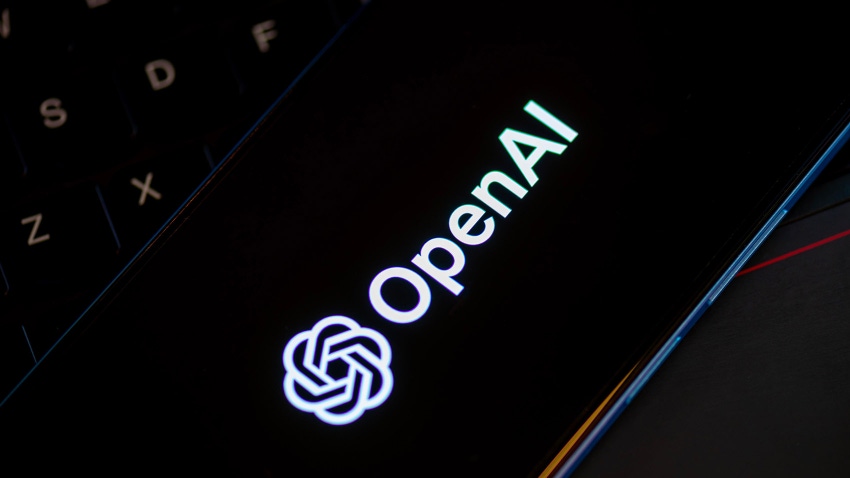The future of Banking as a Service: Banking trends 2024

Reflecting on the banking industry trends and emerging technologies explored, what does the future hold for Banking as a Service? And is the banking system changing as a result? The unbanked remains high while financial inclusivity is low, but Banking as a Service systems are helping to change that. While their impact on the customer isn’t direct, it enables non-bank providers to explore new and untapped markets, and expand their embed offerings to underserved consumers. With these non-bank providers, fueled by BaaS, consumers aren’t restricted to traditional banking requirements and now have a wider variety of payment and credit options. As this sector progresses, we could see access and inclusivity to financial services increase, with more personalized finance solutions diversifying the industry’s offering. The adoption of Banking as a Service by traditionally non-financial entities is also a top area to watch. Companies in areas such as telecommunications, energy and utilities, and even education are integrating financial services into their systems, streamlining transactions and improving customer experience.
From Despair to Disruption: Zafran Takes on Cyber Mitigation
Zafran aims to close the gap between threat detection and remediation by anticipating and neutralizing threats before they can be exploited by attackers, according to Yashar. She wants to use the funding led by Sequoia Capital and Cyberstarts to make Zafran's platform more scalable, integrate AI to refine the mitigation knowledge base, and assemble a team of top-tier developers, researchers and analysts. "Raising is not hard when you're solving a real pain,"" Yashar said. "The biggest money is going toward the platform and hiring the best talent." On the risk assessment side, Zafran wants to take a customer's existing controls under consideration when determining what vulnerabilities pose the biggest risk to them, which Yashar said will help organizations optimize their return on investment. The company's dashboard helps customers see what risk is most exploitable as well as risk reduction activity they could carry out with their existing controls. Zafran has built a war game simulation that allows customers to check how well their cyber platform defends against existing threats and how much risk is reduced by paying for additional controls.
Infrastructure as Code Is Dead: Long Live Infrastructure from Code

Despite the clear benefits to scale and automation that come with IaC, it
remains very complex because cloud infrastructure is complex and constantly
changing. As more teams are involved with cloud provisioning, they have to agree
how best to use IaC tools and learn the nuances of each one they choose. With
these added pressures, fresh solutions promising to improve the developer
experience without increasing risk are emerging. To create the next generation
of solutions, organizations need to understand where the problems truly lie for
development, platform engineering and security teams. ... With multiple
tools and frameworks to choose from, learning new languages and tools can be
difficult for teams whose experience stems from manual infrastructure
provisioning or writing application code. In addition to requiring a new
programming language and interface, most IaC tools define and support
infrastructure and resource management using declarative languages. That means
teams must learn how to define the desired state of the infrastructure
environment rather than outlining the steps required to achieve a result, a
challenge for new and experienced programmers alike.
The most versatile, capable category twisted pair ever
There are still many situations that don’t require the versatility and
performance of Cat6A throughout the entire network but require at the very least
multi-gigabit in specific areas of the network for specific applications, but
without the hassle of mitigation efforts. The GigaSPEED XL5 solution, a new
addition to the GigaSPEED family, addresses the growing sweet spot for a
Category 6 solution that can support the intermediate 2.5 and 5.0 GBE bandwidth
demands, guaranteed and without mitigation. GigaSPEED XL5 cables can support
four connections in a 100 meters channel to support 5G Ethernet. So, it’s ideal
for connecting wireless access points located in the ceiling. And because the
cable diameter is only slightly larger than GigaSPEED XL cables, the
installation tools and procedures are the same as well. Some companies are now
beginning the transition from Wi-Fi 6 to more bandwidth heavy Wi-Fi 6E. It will
be several more years before the migration to Wi-Fi 7 and its 10+ GbE demands.
As a result, the GigaSPEED XL5 solution has an important role to play in
enterprise networks for many years to come.
OpenAI Tests New Voice Clone Model

With hyper-realistic voice generation, a criminal could trick family members
into scams or worse. And with an election cycle coming up, concerns about
deepfakes used to spread misinformation are growing. “This is a massive,
dual-edged sword,” Saxena tells InformationWeek in a phone interview. “This
could be another nail in the coffin for truth and data privacy. This adds yet
more of an unknown dynamic where you could have something that can create a lot
of emotional distress and psychological effects. But I can also see a lot of
positives. It all depends on how it gets regulated.” ... Max Ball, a principal
analyst at Forrester, says voice cloning software already exists, but the
efficiency of OpenAI’s model could be a game-changer. “It’s a pretty strong step
in a couple ways,” Ball tells InformationWeek in an interview. “Today, from what
the vendors are showing me, you can do a custom voice, but it takes 15-20
minutes of voice to be able to train it. While 15 minutes doesn’t sound like a
lot of time, it’s tough to get anyone to sit down for 15 minutes during a day of
work.”
How to Tame Technical Debt in Software Development
Huizendveld provided some heuristics that have helped him tame technical debt:
If you can fix it within five minutes, then you should. Try to address technical
debt by improving your domain model. If that is too involved, you could resort
to a technical hack. In the event that that is too involved, try to at least
automate the solution. But sometimes even that is too difficult; in this case,
make a checklist for the next time. Agree on a timebox for the improvement that
you introduce with the team. How much time are you willing to invest in a small
improvement? That defines your timebox. Now it is up to you and the team to
honour that timebox, and if you exceed it, make a checklist and move on. Don’t
fix it yourself, if it can be fixed by machines. If it is messy because you have
a lot of debt, then make it look messy. Please don’t make a tidy list of your
technical debt. The visual should inspire change. Only people with skin in the
game are allowed to pay off debt, in order to prevent solutions that don’t work
in practice.
How New Tech Is Changing Banking

At its core, blockchain provides a shared record of transactions that is updated
in real time. This allows complete transaction transparency while eliminating
inefficiencies and risks associated with manual processes. All participants in a
blockchain network can view a single source of truth. For banking, blockchain
delivers enhanced security and lower fraud risk. Records cannot be altered
without agreement from all network participants, preventing falsified or
duplicated transactions. Data is also cryptographically secured and distributed
across the network. Even if one location is compromised, the data remains
validated and secured. Blockchain also brings new levels of efficiency to
banking. With an immutable record and smart contracts that execute
automatically, blockchain eliminates laborious reconciliation and confirmation
steps. Settlement times can be reduced from days to minutes. These efficiencies
translate into lower operational costs for banks. By removing intermediaries and
allowing peer-to-peer transactions, blockchain also opens up new opportunities
in banking. From micropayments to decentralized finance, blockchain enables
models that are impossible with traditional infrastructure.
Cloud Email Filtering Bypass Attack Works 80% of the Time

After examining Sender Policy Framework (SPF)-specific configurations for 673
.edu domains and 928 .com domains that were using either Google or Microsoft
email servers along with third-party spam filters, the researchers found that
88% of Google-based email systems were bypassed, while 78% of Microsoft systems
were. The risk is higher when using cloud vendors, since a bypass attack isn't
as easy when both filtering and email delivery are housed on premises at known
and trusted IP addresses, they noted. The paper offers two major reasons for
these high failure rates: First, the documentation to properly set up both the
filtering and email servers is confusing and incomplete, and often ignored or
not well understood or easily followed. Second, many corporate email managers
err on the side of making sure that messages arrive to recipients, for fear of
deleting valid ones if they institute too strict a filter profile. "This leads
to permissive and insecure configurations," according to the paper. ... the fact
that configuring all three of the main email security protocols —
SPF, DMARC, and DKIM — are needed to be truly effective at stopping
spam.
RPA promised to solve complex business workflows. AI might take its job

Like most enterprise software companies, RPA vendors are experimenting with
generative AI technologies. "Generative AI is poised to amplify the
accessibility and scalability of RPA, mitigating the predominant obstacles to
entry, namely the need for specialized developers and the risk of bot failure,"
Saxena said. Alex Astafyev, co-founder and chief business development officer at
ElectroNeek, agreed that generative AI will make it much easier to use RPA
technology inside companies that have their expensive software developers
committed to other projects. "While many RPA platforms follow a low-code
approach, thus allowing non-tech users to build automation bots, the knowledge
of variables and programming logic might be needed in certain cases. Integration
of AI lowers the barrier even further," he said. ... Generative AI technology
will also allow RPA systems to deal with complicated problems described with
natural language inputs, Pandiarajan said. “In the near future, it is
conceivable that you could ask a bot about the status of a customer's package in
the fulfillment process, and the AI would understand the process and provide
real-time updates," he said.
Why CDOs Need AI-Powered Data Management to Accelerate AI Readiness in 2024

Historically, data and AI governance have been marred by complexity, hindered by
siloed systems and disparate standards. However, the urgency of the AI-driven
future demands a paradigm shift. Enter modern cloud-native integrated tools –
the catalysts for simplifying the adoption of data and AI governance. Pezzetta
wishes to leverage AI to clean data and look for anomalies. By leveraging a
modernized solution approach, organizations can streamline governance processes,
breaking down silos and harmonizing standards across disparate datasets. These
tools offer scalability, flexibility, and interoperability, empowering
stakeholders to navigate the complexities of data and AI governance with ease.
... “We need to bring AI into our processes. Therefore, we need to define
governance processes to develop AI and data together with hubs in business on
centralized platforms with integration patterns. I would love to get AI
functions in ETL (extract, transform, and load) processes. I hope that we start
to use AI in the data pipelines to enhance data quality,” Zimmer adds.
Quote for the day:
“When you fail, that is when you get
closer to success.” -- Stephen Richards
No comments:
Post a Comment